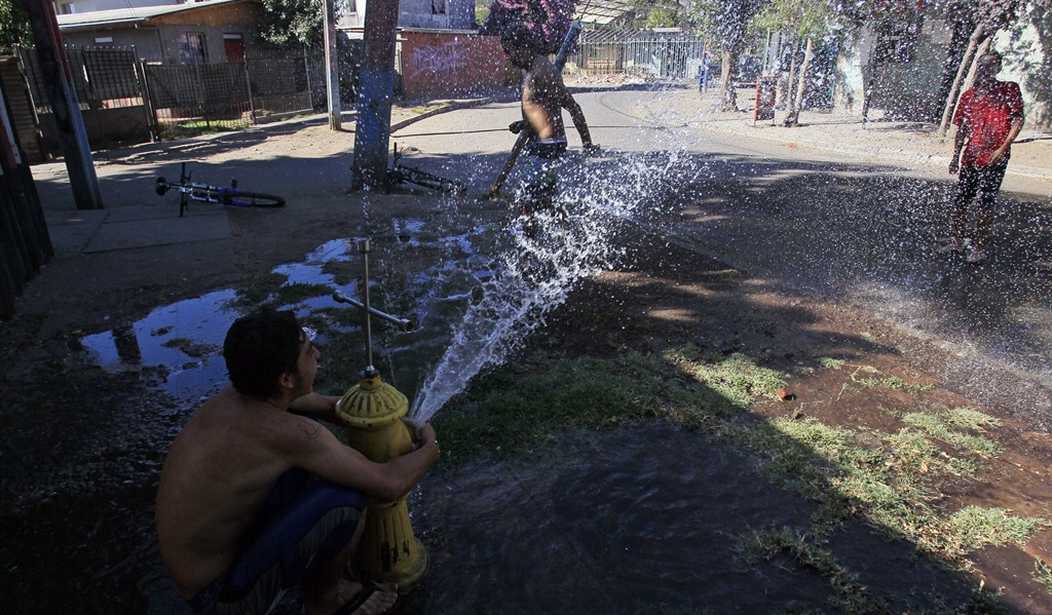It's been very hot in June and early July. But today, it's currently 77 degrees at noon Central Time. It's expected to rise to 85 later today and slightly warmer over the weekend. Next week, it will be in the high 70s.
No doubt, it's much warmer in other parts of the country. Las Vegas has had 15 days in a row of 115-degree heat or higher. It's been brutally hot in Arizona, too. California has seen some heat records fall, and the Pacific Northwest is also experiencing a fairly unusual heat wave.
However, according to the scientists at the National Oceanic and Atmospheric Administration (NOAA), several indices of temperature measurements in the United States show that temperatures have actually been considerably lower than the highest temperatures on record.
"NOAA’s June 2024 Climate Data Shows No 'Record High' U.S. Maximum Temperature Anomaly or Absolute Temperatures Occurred Despite Flawed Alarmist Claims Portrayed in Media Political Hype," reports Larry Hamlin on the climate website Watts Up With That.
NOAA‘s June 2024 Contiguous U.S. USCRN maximum temperature anomaly data clearly indicates that not only is there no established trend of increasing maximum temperature anomalies during the period starting in 2005 but also the June 2024 anomaly value (2.84 degrees F highlighted in red) is below the prior highest June value of 3.91 degrees F in 2021 as well as far below the highest anomaly value ever recorded during this period of 7.72 degrees F that occurred in March 2012.
It's been very hot for tens of millions of people. But the "record" temperatures are comparing apples to oranges. The calendar day "records" are meaningless. What matters are averages over 30 days or a year. And the data says that the climate hysterics are full of it.
NOAA’s Contiguous U.S. maximum absolute temperature measured data for the month of June for the period 1895 through June 2024 (shown below) establishes that June 2024 (84.61degrees F) value is only the 6th highest measured June value with the highest June value occurring in June 1933 of 85.91 degrees F.
Furthermore, NOAA’s Contiguous U.S maximum absolute temperatures measured for all months between 1895 and June 2024 establishes that the June 2024 maximum measured absolute temperature is only the 1,340th highest measured temperature (84.61 degrees F) out of a total of 1540 measured maximum temperatures with the highest being July 1936 at 90.81 degrees F.
Even in sweltering Los Angeles and San Diego, "record all-time high temperatures did not occur for any of NOAA’s 9 tracked California cities during June 2024," according to Hamlin.
It's so easy to dupe people when you substitute "weather" for climate." I've written a hundred times that the media deliberately use hot or cold weather to argue that the climate is changing. It's nuts.
And "average temperatures" as measured by the NOAA may themselves be corrupted as the Heartland Insitute discovered in 2022.
A new study, Corrupted Climate Stations: The Official U.S. Surface Temperature Record Remains Fatally Flawed, finds approximately 96 percent of U.S. temperature stations used to measure climate change fail to meet what the National Oceanic and Atmospheric Administration (NOAA) considers to be “acceptable” and uncorrupted placement by its own published standards.
The report, published by The Heartland Institute, was compiled via satellite and in-person survey visits to NOAA weather stations that contribute to the “official” land temperature data in the United States. The research shows that 96% of these stations are corrupted by localized effects of urbanization – producing heat-bias because of their close proximity to asphalt, machinery, and other heat-producing, heat-trapping, or heat-accentuating objects. Placing temperature stations in such locations violates NOAA’s own published standards (see section 3.1 at this link), and strongly undermines the legitimacy and the magnitude of the official consensus on long-term climate warming trends in the United States.
Researchers have tried to debunk the Heartland Study by claiming that the data is run through an algorithm that takes the heat bias out of the equation. Others question the group's motives because they deny climate change. Still, other debunkers point to the author's selective use of facts.
But the underlying thesis has yet to be disproved: that the temperature stations are placed in areas that violate the NOAA guidelines. At the very least, the data needs to be re-evaluated.
That's what real scientists would do, anyway.










